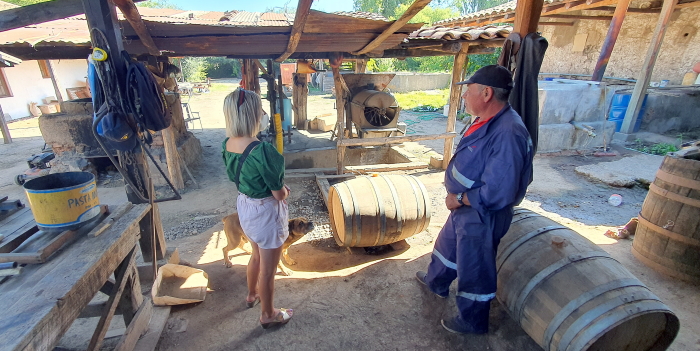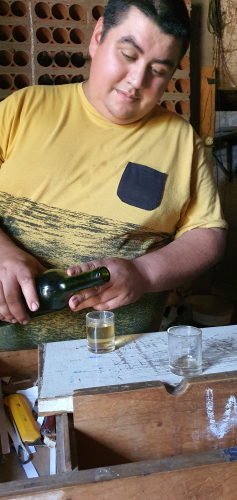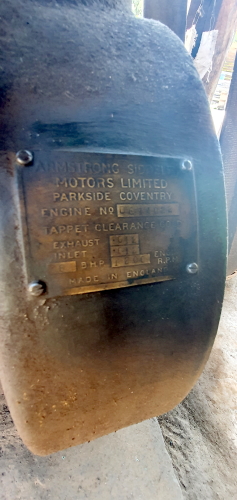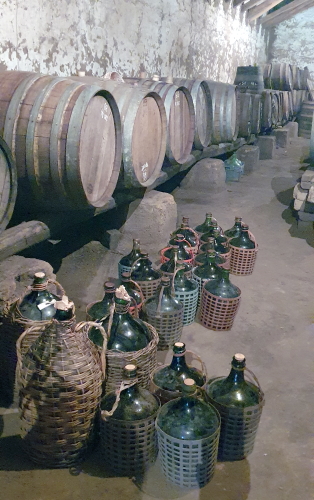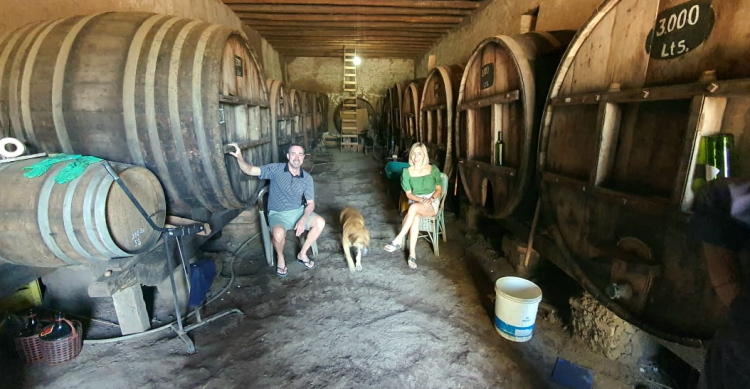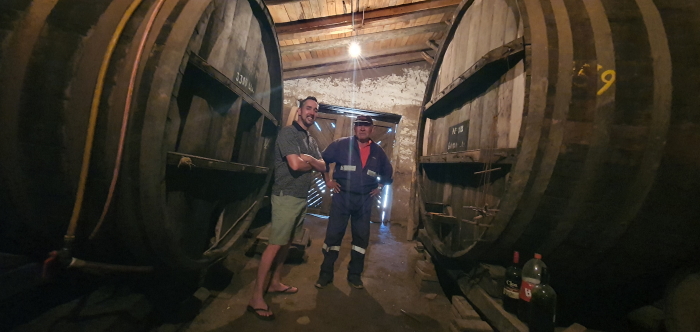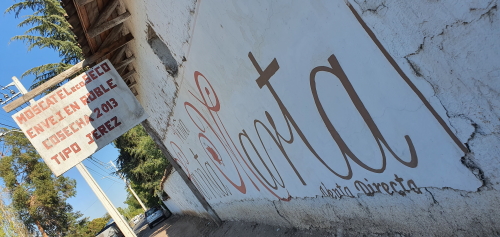Château Lafite it isn´t!
We saw this winery while we were exploring the Colchagua wine region and stopped to visit, not knowing what to expect. As you can see from the photos, the thick adobe walls are not in great shape, the roof looks like it could fall in and there was a rickety old stable door which we poked our heads over. The dark and damp interior of Santa Marta winery greeted us, filled with large wooden casks, but no one was around. We called out with no answer and then we noticed a bell hanging from the roof beams with a rope attached to the clapper, which we pulled. A guy appeared and asked if we wanted to buy some wine, we said we didn’t know what the wine was like so he offered to let us taste some. Perfect, just what we wanted.
You don’t see too many places like this, it reminded us of a place in rural Turkey where we tasted about a dozen wines in tiny shot glasses balanced on a wooden plank. It was a similar deal here. As we sipped we started to look around and ask some questions, and the winemaker appeared. We asked him some questions which were probably not what his regular customers ask him (he probably never gets asked anything except the price) and he offered to show us around. In comparison with modern wineries where hygiene is paramount, this place must be a bacterial fiesta. Especially with the resident dog chasing around the place.
We had tasted some of the wines without having to pull a distressed face but now seeing what the place was like we were amazed that we hadn’t “suffered” when drinking them. The “tipo Jerez” (Sherry style) wine we really quite liked and bought some in the end, but the wine was not the attraction here, it was the experience. The wooden casks were either American oak or Rauli, which is a Chilean tree, better known for storage rather than adding anything positive to the wine. The production area is ramshackle, to say the least, you can see open-topped fermentation vats made from concrete and terracotta, old fashioned machinery for de-stemming and crushing, tools and barrels strewn everywhere. It is the antithesis of a modern winery.
The winemaker asked where we were from and as I am from England he said “we have something from England, never lets me down, never uses much fuel or oil”. It was a motor that powered the de-stemmer or pumps, absolutely covered in dirt and oil and I asked him if he could clean off the plate to see where it was made. Not only was it made in my home city, but I used to live very close to the place – quite a coincidence (he wasn’t as excited about it as I was!)
We poked our noses into everything, asked loads of questions and he and his helper were very happy to answer them, this guy knows what he is doing and the fact that the wines are not flawed proves it. As I said the visit is about the experience, not the wine, and this is true in many places we visit. Clients often don’t speak the local language but the attitude and enthusiasm of people showing you round go a long way to not making this an issue, plus of course, we or the guides would be translating where required.
It is definitely not like visiting Chateau Lafite, very far from it, but these sorts of visits will always stand out among the well polished, hyper-investment wineries around the globe. We love to show contrasts on our tours and this is one place you will remember for a long time!
